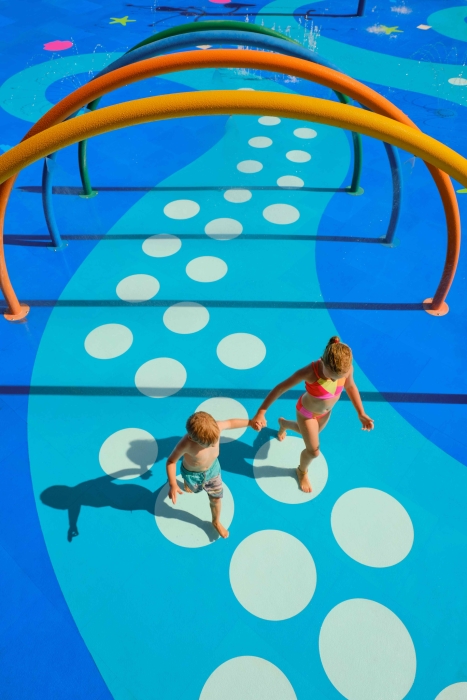Guest Post by Life Floor
By: Briana Massie, Marketing Manager for Life Floor ([email protected])
 Everyone experiences play in different ways. It’s the reason why there isn’t just one type of spray feature or just one type of pool. Aquatic environments are always changing and adapting to new trends and regulations in the industry. Likewise, aquatic facility directors and operators are constantly evaluating updates that will deliver increased value to their guests and members. In order to provide features that appeal to a wide variety of individuals, facility staff members need to choose what combination of elements will allow for limitless play for their intended audiences.
Everyone experiences play in different ways. It’s the reason why there isn’t just one type of spray feature or just one type of pool. Aquatic environments are always changing and adapting to new trends and regulations in the industry. Likewise, aquatic facility directors and operators are constantly evaluating updates that will deliver increased value to their guests and members. In order to provide features that appeal to a wide variety of individuals, facility staff members need to choose what combination of elements will allow for limitless play for their intended audiences.
Providing options for guests to engage with a facility in different ways is a crucial component of play value. Play value directly influences guest perception of a facility and can be a determining factor of whether or not guests will return. For example, if a child has a better experience at a park farther away, parents may be more inclined to return to that park even if it is more inconvenient.
A prominent way to increase play value and accessibility at aquatic facilities is to provide experiences for different age groups and abilities. Any type of water play for infants and toddlers can be seen as risky from their perspective. For instance, interacting with a simple spray feature on a splash pad is often a new and exciting experience. For older children, riding down high-speed water slides, scaling lofty towers, or getting drenched under tipping buckets can be seen as more exhilarating ways to interact with aquatic environments. These different features help shape children’s development at different stages of life.
Diversity of play is encouraged by maximizing the creative options available; however, these options don’t have to be limited to the spray features, slides, and towers on site. The design of a facility’s floor can also enhance play value by giving children of all abilities the opportunity to creatively invent games based on the patterns and images on the surface.
Having a beautifully designed surface is only part of the solution. When an aquatic surface is also cushioned and slip-resistant, children can more confidently run, jump, play, and explore all that a facility has to offer. NSF/ANSI/CAN Standard 50 is a good standard to follow for best practices in aquatic surfacing. This new standard was developed following the surfacing precedent set by playgrounds.
Free play is heightened living; faster, rougher, wilder. There is less planning and less caution, so designing spaces with softer surfaces can protect play from getting too fast, too rough, and too wild. Years ago, playgrounds were surfaced with hard, abrasive concrete until people realized there was a better alternative that allowed for play as it was meant to happen. They realized humans weren’t designed to play on concrete. Softer, more impact-absorbing materials have since become the standard for dry play and are now recommended for wet play as well.
Designing aquatic spaces with features, fixtures, and finishes that maximize play value has the ability to turn a good facility into a great one. By engaging with visitors more holistically across all features of an aquatic facility to accommodate different age groups, abilities, and comfort levels, facility supervisors, operators, and decision-makers can create more encompassing parks filled with limitless possibilities for play. The experiences they offer can encourage important developmental milestones for children while also creating long-lasting family memories along the way.
All views and opinions expressed by Life Floor in this blog post are solely their current views and opinions. They do not reflect the view and opinions of WRPA, its affiliates, staff, members, or employees. Life Floor's opinions are based upon information they consider reliable, but neither WRPA nor its affiliates, staff, members, or employees, warrant its completeness or accuracy, and it should not be relied upon as such.
